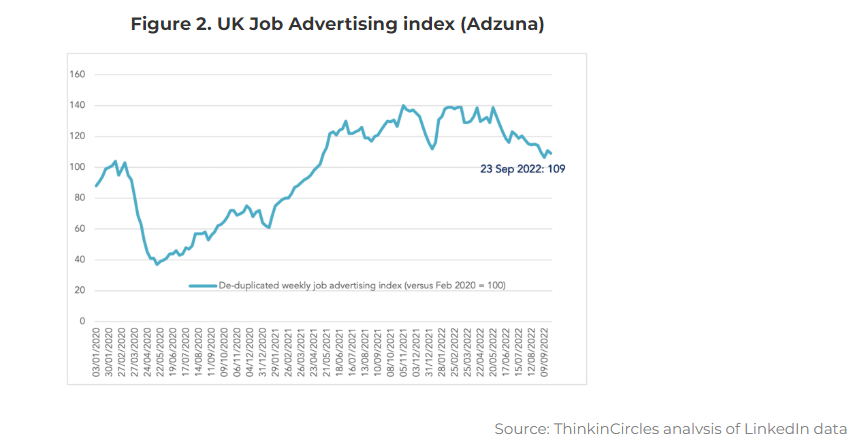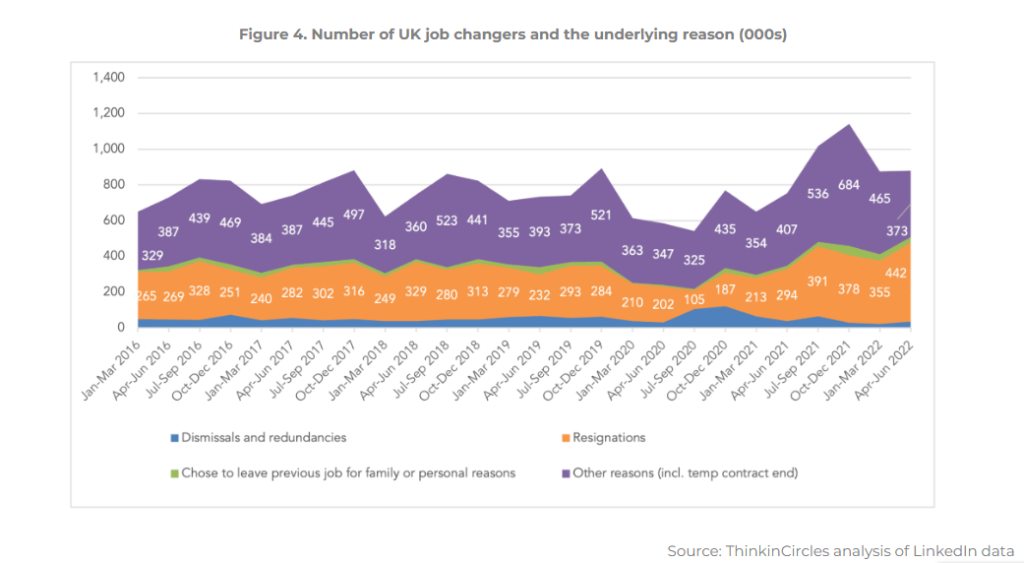
Why Resignations Intensified in Q2 of 2022
- Ideas & Insight
-
Jan 09
- Share post

ThinkinCircles looks in-depth at UK job vacancies, job advertising, job-change data, and we explore the reasons why there was a sharp increase in resignations in Q2 of 2022
Whilst vacancy levels remained high, job advertising levels declined sharply in Q2
Whilst UK job vacancy levels appear to be past their post-pandemic peak and are now starting to decline, they are still running at 150%+ of pre-pandemic (Feb 2020) levels. From a job advertising volume perspective, the all-occupation index (set with Feb 2020 as 100) started to decline from its near-time post-pandemic peak from early June onwards.


Job advertising levels continue to vary greatly by skill set.
Whilst job advertising levels within most skill sets declined between the beginning of Q2 and the beginning of Q3 (as measured against pre-pandemic levels), notable variations in the level of posting activity remain – highlighting the extent to which each is challenged.

Resignations reached their highest level, in Q2 2022, since records began in 2016
As to the potential reasons why all-occupation job advertising levels declined before job openings peaked, it is notable that the number of people who changed jobs in Q2 2022 voluntarily (i.e. who took up a new post after resigning) was at the highest level since records began in 2016. As such, it is unsurprising that recruiters did not have to work as actively to fill posts via open job ads.

A backlash to the return to the office, and the need to offset the rising cost of living, are likely fueling resignations
As to the reasons behind the sharp increase in resignations in Q2 2022, they are likely to be numerous, including a potential backlash – amongst those who now appear wedded to the concept of remote working – to being asked to return to the office, which took hold in earnest the latter part of Q1. The rising cost of living will also be driving voluntary job changes, as workers seek to reduce work-related costs (fuel, if working from home, and travel costs, if working on-premise). And we can expect this latter trend to increase sharply in Q3 and Q4.